Matt Mills – Expanding Light
Posted on July 5, 2023
At one point in his career, this Orlando-based lighting designer and programmer was asked to tour with The Stringed Cheese Incident. Having started out lighting at EDM clubs and cut his teeth with metal acts, he was somewhat wary, uncertain of how his style would mesh with the unfamiliar psychedelic-country tinged music of this band. Looking back now though, he recalls how he wound up admiring the musicianship he saw on stage every night during that tour, and how supporting it with light helped him grow as a designer.
This experience is indicative of how Matt Mills approaches his work. Like light itself, which physicists say can theoretically travel forever, for him lighting design seems to know no limits. Any experience can be made better with the right lighting, and a designer can learn from any experience.
Following this philosophy Mills has powered his career as a designer, programmer and director in multiple directions. In addition to his work for bands like Disturbed, Linkin Park, Shinedown, Nelly Furtado, Sammy Hagar, and Pantera, Mills keeps up with a full schedule of corporate event work through the company he’s part of, Touch Light & Media.
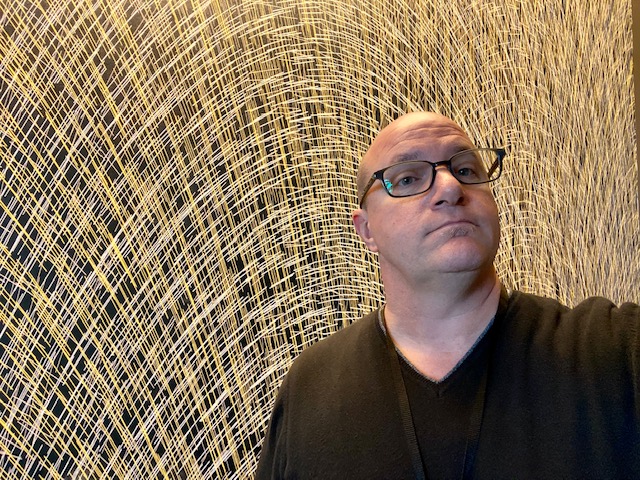
In all areas, his problem solving skills and ability to turn visions into realities are well-known. This was very much in evidence on Mötley Crüe’s final tour when he devised a way to light Tommy Lee’s famous “Crüecify” drum kit, which was attached to a 360ﹾ rotating platform that moved along two 200-foot metal tracks, dubbed the “Tommy Coaster.”
A former Tour Link Lighting Director of the Year winner, Mills’ big break came early in his career when he was working for Christie Lites as a technician and was called on to light a show by 3 Doors Down. Frontman Brad Arnold quickly asked him to become the band’s LD. He hasn’t looked back since.
Taking time from his busy schedule, he talked to us about the expansive power of light.
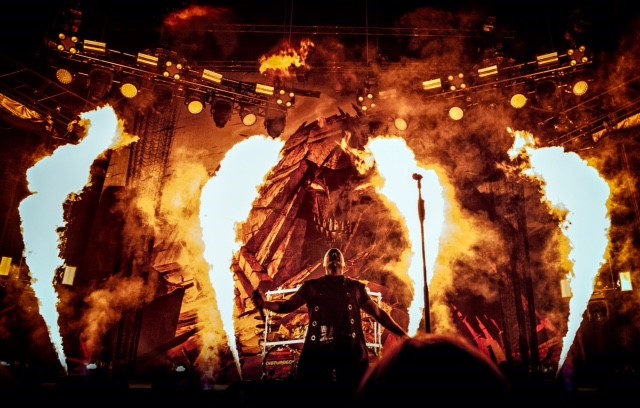 Photo: Todd Moffses
Photo: Todd Moffses
Your work on the 2016 Disturbed Immortalized tour was especially memorable for us as it was for a lot of people. They hadn’t done a live show for five years at that point, so there was a lot of pent up energy. Can you tell us how you captured this in light?
“A Disturbed show in general is very high energy and very much in your face. This one was no exception. To emphasize the energy they bring live I utilized lots of activity with strobes and blinders. However, this was also the album that had ‘Sound of Silence,’ so there were moments in the show where I was able to slow things down a bit and create a moodier theatrical feel.”
Speaking of that tour, we really liked how you began the show in darkness and punctuated it with some explosions of bright light. You often use dark space and shadows in your work. What are your thoughts on balancing darkness and light?
“I really enjoy drawing the audience’s attention in and not revealing the entire lighting rig in the first half of the first song. Fortunately, Disturbed is one of those bands that likes to take fans on a journey, and they arrange their set list in a way that has several high points as well as several moments that bring the energy down a little bit, only to build it back up even higher. This allowed me to do the same from a lighting standpoint on that tour. During the design phase, we discussed several options to get the most flexibility out of the lighting rig while staying on a budget that would make everyone happy. I opted for six independent trusses with a motion control system. With this design, I was able to change the entire look every four songs. I feel it worked out well, The band and I were very happy with what we were able to do.”
You were with Disturbed in 2011 before their hiatus. Creatively, what was it like reuniting with them? Did you have to start from the beginning again? How has the relationship changed in five years?
“It was a fresh start. The hiatus was much needed as they had been touring hard ever since ‘Sickness’ broke; so this gave them the time they needed to decompress and recharge their creativity. I was fortunate to get the call back after the hiatus. The guys did make quite a few changes at that period, but they told me they recognized all the hard work I had done with them on the previous tour, and asked me to come back as their designer.”
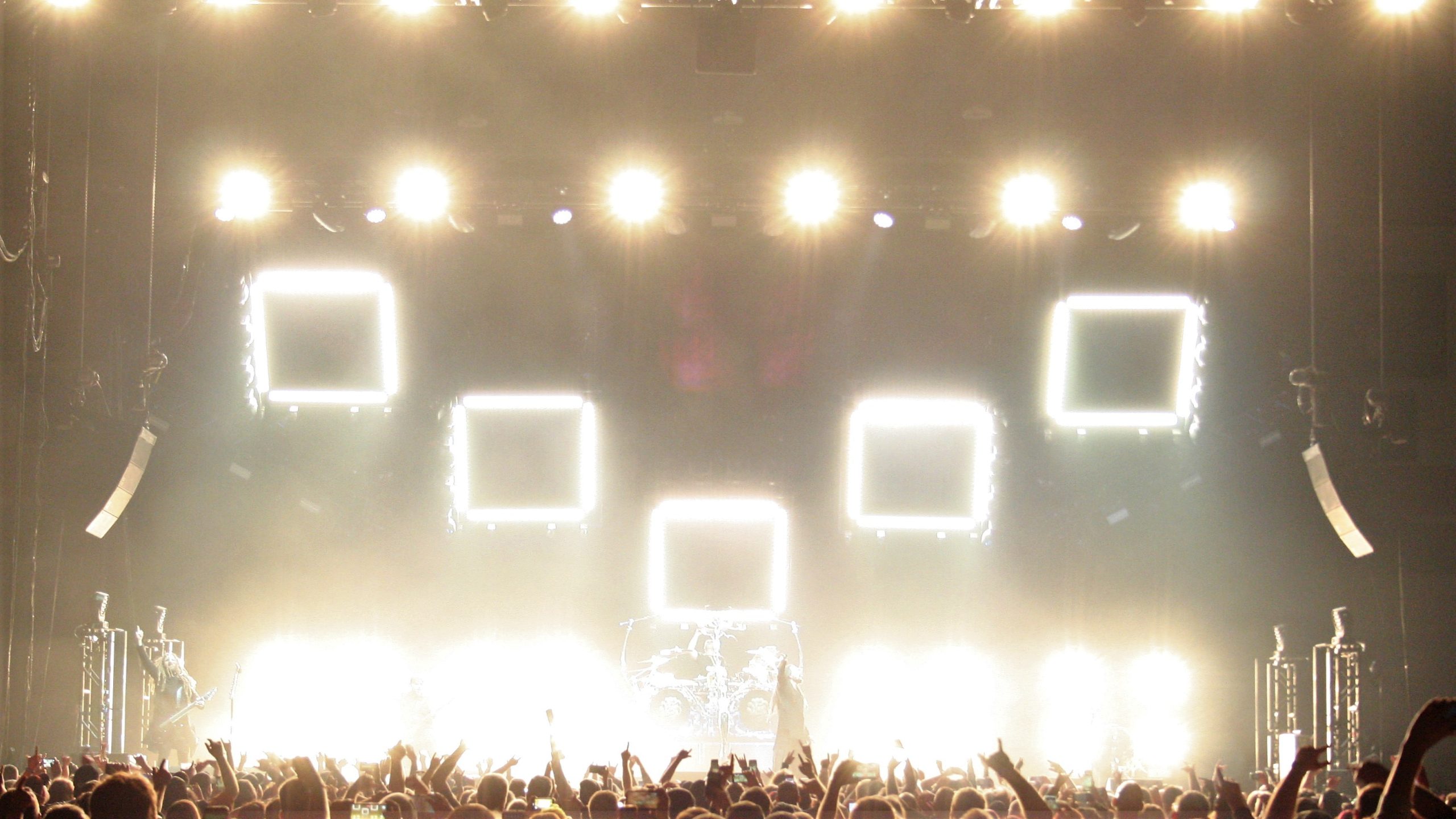
One of your many memorable tours was Mötley Crüe’s final tour, which was built around Tommy Lee’s famous “Crüecify” drum kit, and ‘Tommy Coaster.’ What was the biggest challenge in that project?
“That tour was massive and it pushed every department to its limits daily. One of the bigger challenges was that all the gear showed up to pre-production in 18 trucks but had to leave in 12 trucks. There were some adjustments we had to make to get it rolling down the road. It was such a spectacle that lighting it actually was not too difficult.
“What ended up being the biggest challenge for me was lighting Tommy because he hates front light. We had four movers behind him to silhouette him, but it just did not look right to me. So, throughout the tour I would sneak in some side light here and there and he would bust me every time. He has a talkback mic going to several of our in-ear packs and he would call me out during the show, while in the middle of a song without missing a beat. ‘Matty, what’s up with these two lights pointing me dude?!’ I wish I had a recording of his talk back mic banter, it is hilarious. He may have missed his calling as a comedian.”
“Sooner is one of the most creative designers I have ever worked with, I love the designs she dreams up. I think we worked well together because she welcomed my creativity and appreciates the ideas I have for a direction we should take with the programming. I certainly miss working with her. There’s no reason we have not been working together, she had a show over here, I had a show over there, and we have both been busy. Hopefully we will reconnect on something soon.”
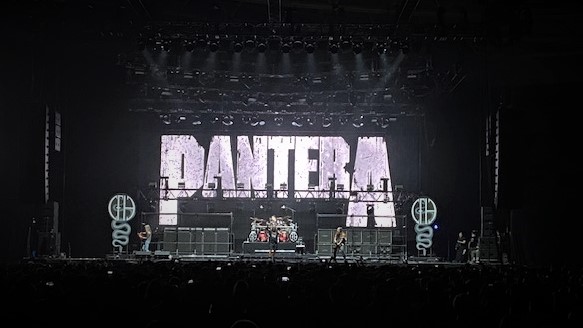
On the subject of good chemistry, early in your career you were working for Christie Lites and did one job for 3 Doors Down. Then, the frontman Brad Arnold asked you to become the band’s LD. Can you tell us how that happened, and why you hit it off so well?
“That was my big break, so to say. I was a shop guy at Christie Orlando and one of the account reps landed the show but along with the lighting package, their TM requested they send a lighting guy. So off I went. The singer really liked what I did and they ended up keeping me. They were an up-and-coming band and I started with them in small theatres and kept building up to sold out arenas. It was a nice gradual progression for me and allowed me to progress with designing and programming at a nice pace instead of being thrown right into the deep end.”
You’ve worked for a very wide range of clients. Do you have to like a band’s music to do a good job lighting them?
“It definitely helps, but it really isn’t necessary, well, at least not for me. Perfect example, years ago I got a call to go out on String Cheese Incident, not really my genre of music. Once I got out there, I witnessed amazing musicians that were totally in sync with each other producing some of the most amazingly creative music nightly. It really changed my attitude and opened me up to artists I never knew existed. It changed my perspective and helped me be able to find the energy and different nuances of any artist I may be working with.”
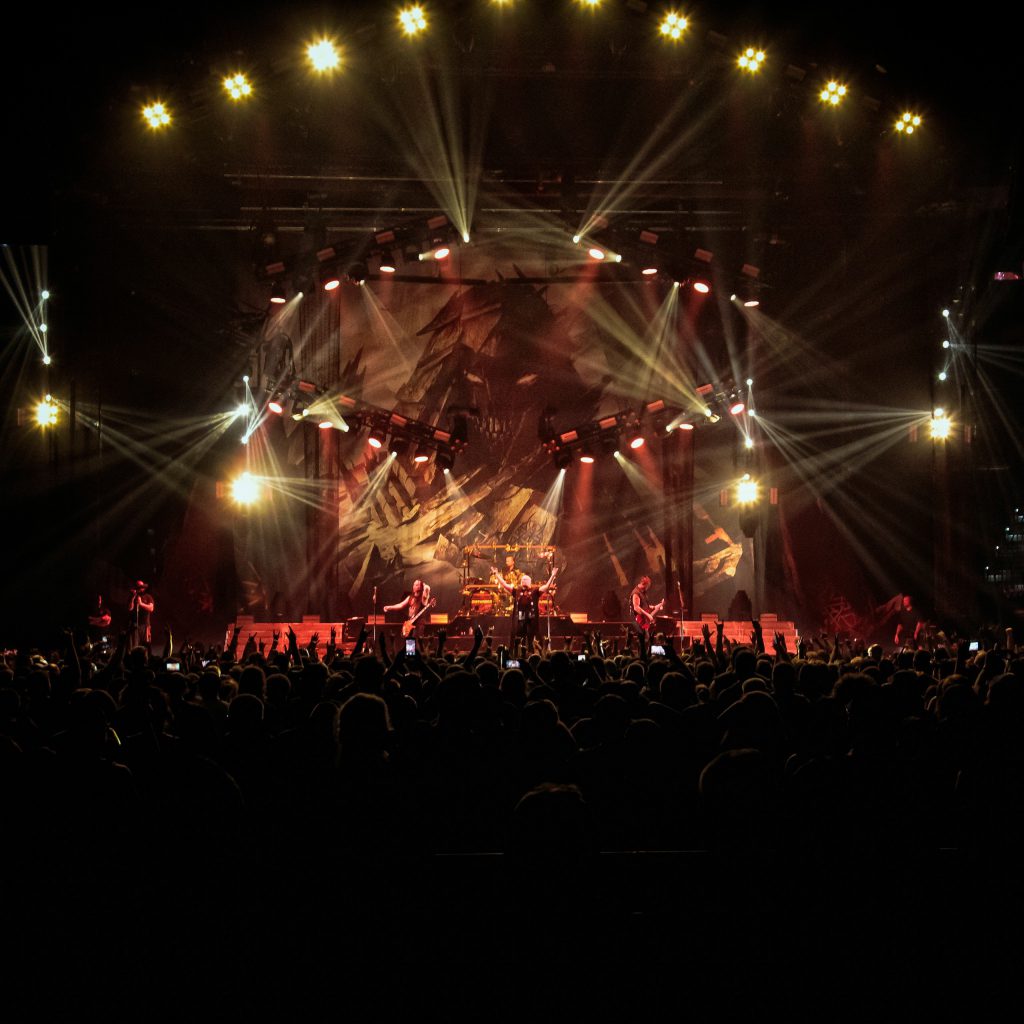
Photo: Todd Moffses
Is there any artist from the past who’s no longer with us who you wish you could have lit as a designer?
“Some of the ‘60s and ‘70s bands like Zeppelin and The Doors would have been cool.”
Many of your peers you’ve worked with as a programmer or lighting director have praised your ability to listen and understand what it is they want to accomplish; and then work through the techniques needed to make it happen. When you’re listening to a designer or other collaborator talk about their vision, what are the things you focus on to determine if or how you can turn it into reality?
“When meeting with the creative team, whether it be a designer, a creative director, or the artist themselves, I do my best to hear them and try to pickup what is important to them about their vision. From there I will get to work to bring their vision to life and try to show them a few options along the way they may have not thought about. Most of the time they are very receptive to my ideas and we will expand on them further.”
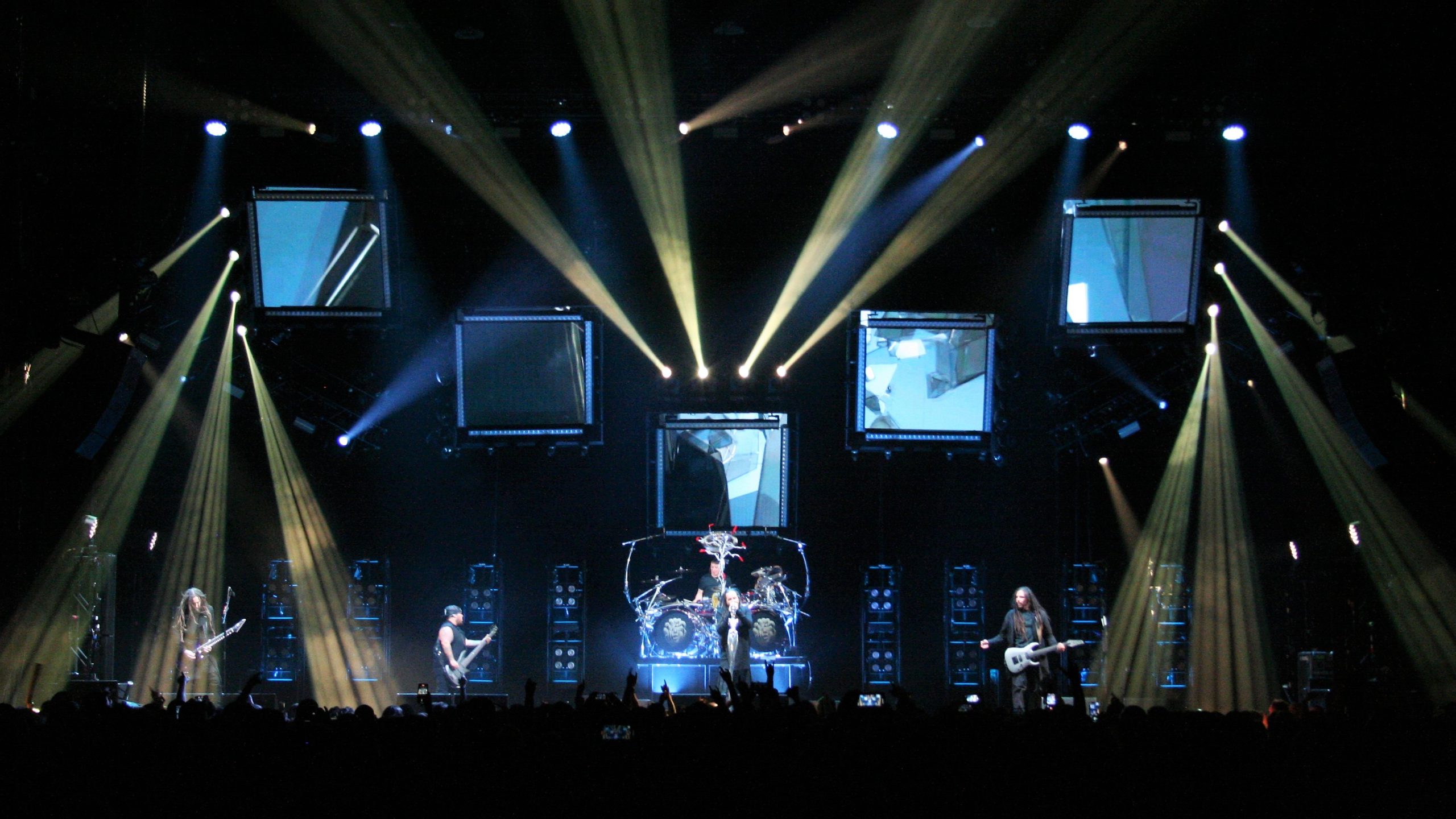
What are the most common mistakes that you see designers make when dreaming up a concept that can’t be turned into reality?
“FOR THE LOVE OF GOD, LIGHT THE DAMN BACKDROP! The artist paid for the backdrop, they want people to know who they are so they can continue to build their audience. It is their branding, make sure it is lit. I see so many pictures on social media of bands and a lot of them have no light on their backdrop. I’m sure there are two lights in the rig you could dedicate to the backdrop. It actually took me a little while to learn that myself.”
You’ve also received a lot of praise for the theatrical looks you bring to a show, whether as a designer or programmer. How do you add a sense of storytelling and drama to your shows?
“I wouldn’t necessarily say I am telling a story, more like enhancing the mood of the music being played by the artist. I got my start in techno-EDM nightclubs where all I was lighting was the air. I was making the lights do cool movements to the music for a room full of people on psychedelics. I had a dark room with a lot of fog with a rig of moving lights and I just kept experimenting with different looks. That looks cool, that looks cool, that suck, don’t use that one….. I guess I kept evolving those looks into my shows today. I do love a nice moody breakdown where I can do some intricate sweeps into the crowd.”
Do you approach a project differently when you’re a programmer and director as opposed to the designer?
“Not really, I feel they all work hand in hand together. I feel its more important for it to be a team effort and have everyone feel free to have an input.”
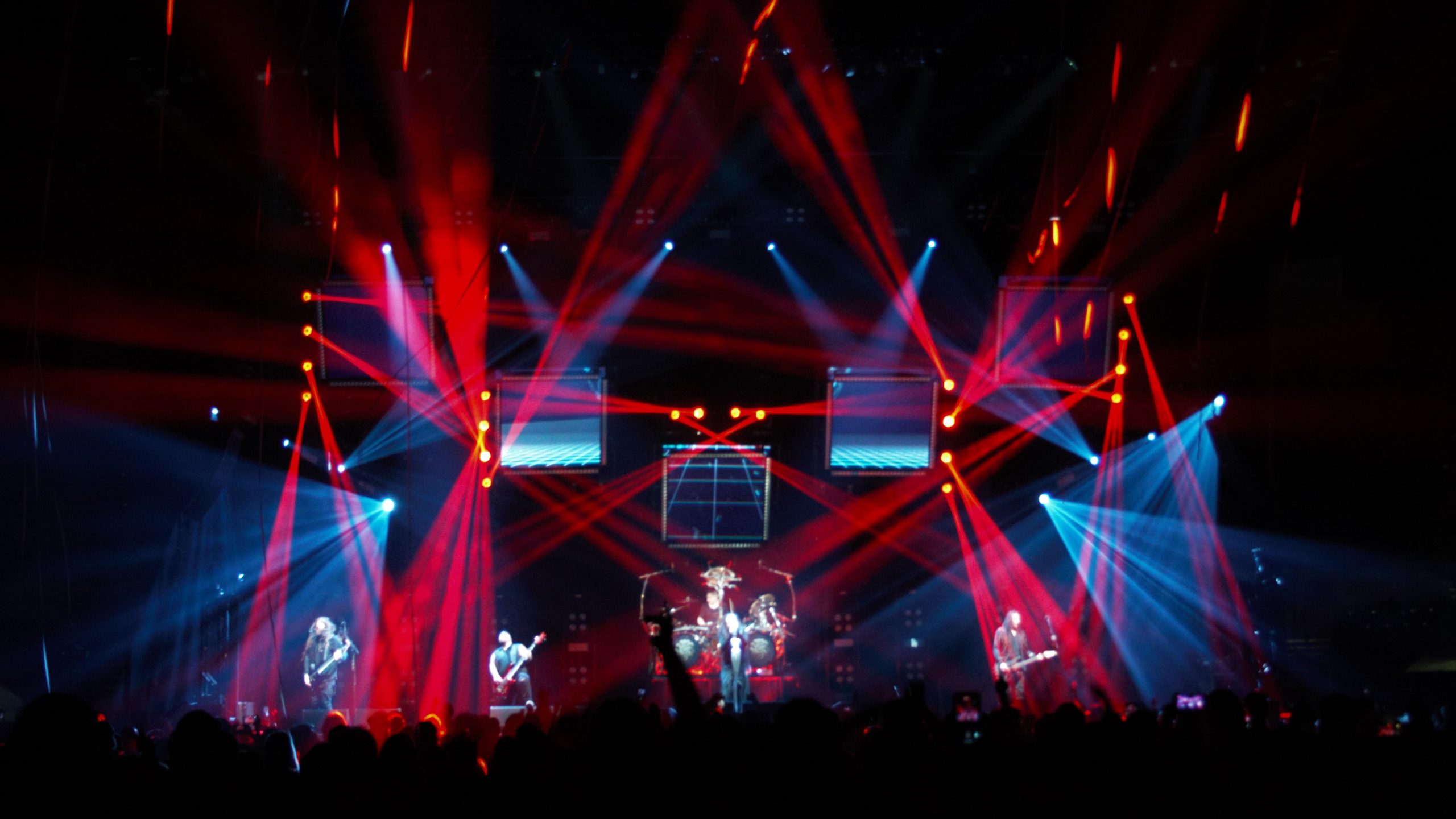
You won The Lighting Director of the Year award from Tour Link for your work with Linkin Park. What made your work with them successful?
“When I got brought in, I was taking over a rig that already existed. Jim Digby and I talked about what he and the band were looking for and he let me go to work. We would review footage of the shows for a week or so and I would get notes and make adjustments as needed. From there I kept expanding the show.”
Throughout your career, you’ve been at the forefront of exploring new technology. So, how do you see AI influencing your work?
“That has actually been on my mind a lot lately and I do not really have an answer for that just yet. I do hope it streamlines some things and makes processes more efficient.”
In addition to your work on tours, you do quite a bit of event/conference lighting. Many of these events see radically different from some of the intense bands you light. How do you transition from live touring to events? Do you get into a different head space for each?
“I live in the Orlando area and have been doing conventions for a long time. When a band I was touring with would take a break, I would jump into corporate work in Orlando. I have had a great balance between the two. While they are completely different, they are also similar in ways. I still need to light someone on a stage, there will still be cues that have to happen at the right time, it still has to be a good looking show, etc.”
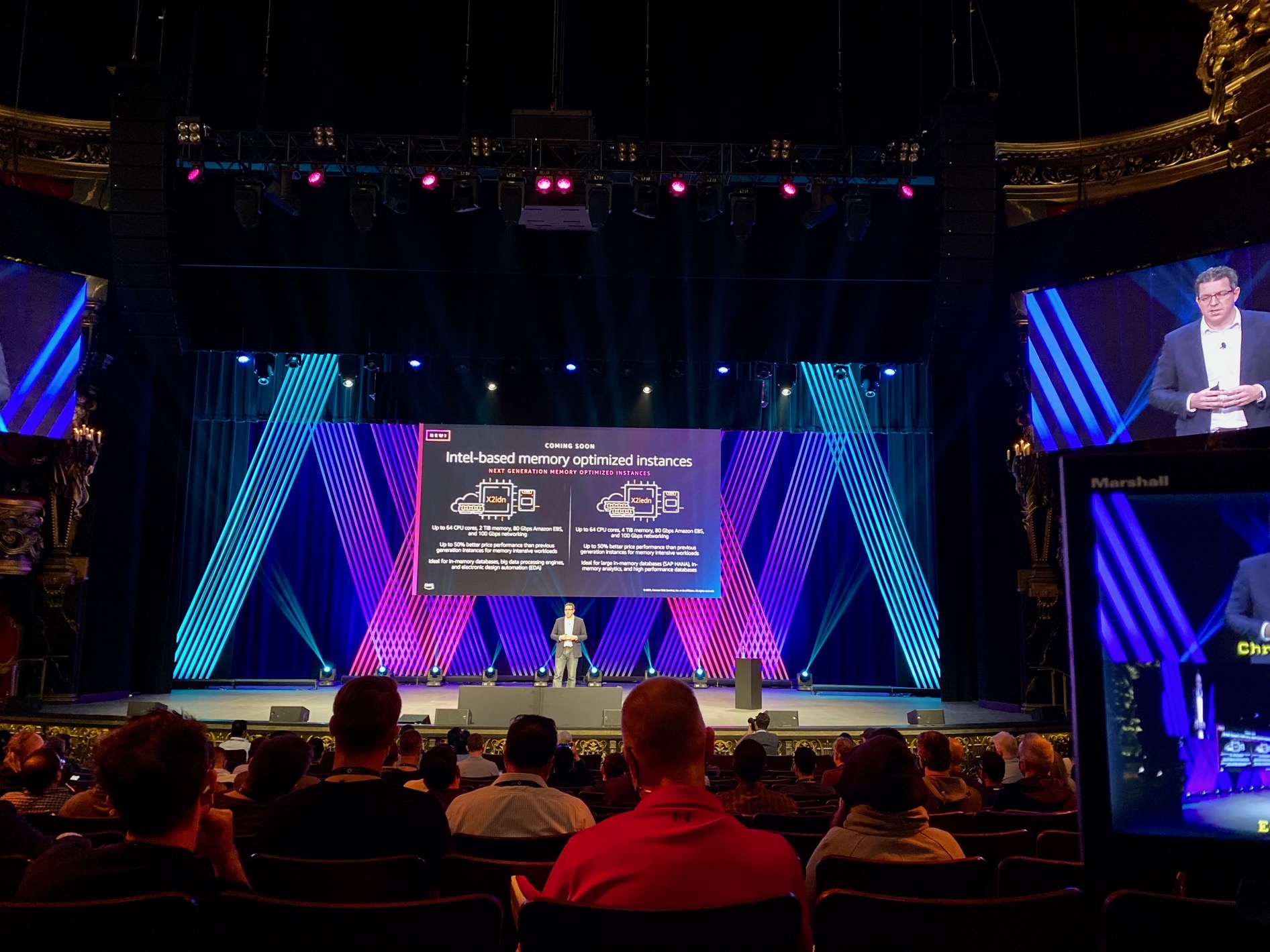
Do you think events are incorporating more live rock show elements into their designs?
“My company, Touch Light & Media, is on the shows we do. We have several clients that are paying a lot of money for these amazing intro videos at the beginning of their conferences. We have been getting timecode added to those files and will choreograph a lightshow to enhance the videos.”
What’s the best and worst things about being a lighting professional?
“Best thing for me, traveling the world, making friends in different countries, and experiencing different cultures. I love seeing it all. I just got back from Japan with Pantera, it was awesome. Worst part is being away from my wife and kids. One of the perks of the job is I got to take my kids and their friends to a show the other day where we were walked in though backstage. My kids have been around it their whole life but their friends’ minds were blown. Now they’re the ‘kids that know Shinedown’ at their school, pretty funny.”
Are there any difference in working on touring productions today compared to when you started?
“A few things, the efficiency has gotten much better. All the truss products like that allow you to roll in, connect, test, and send it has really sped up load ins. Another thing is the networking of consoles and being able to integrate different elements onto the same network.”
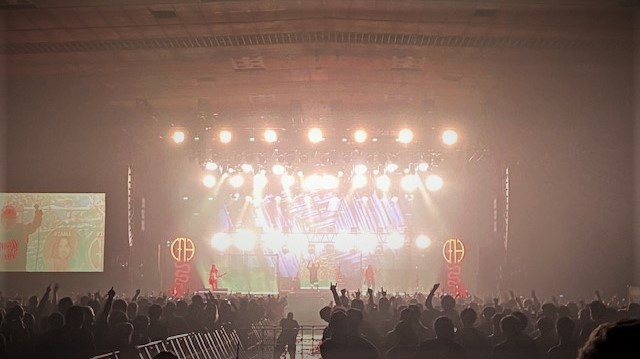
What’s the one thing you want people to know about you as a lighting professional?
“I’m just a guy that likes to make things look cool while nerding out on lighting technology and working with cool people.”